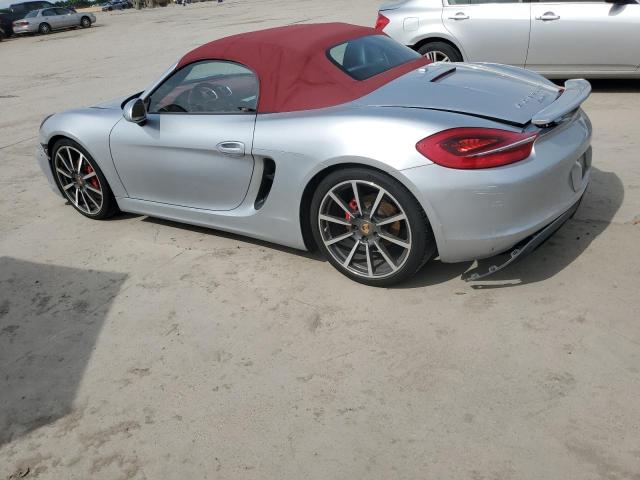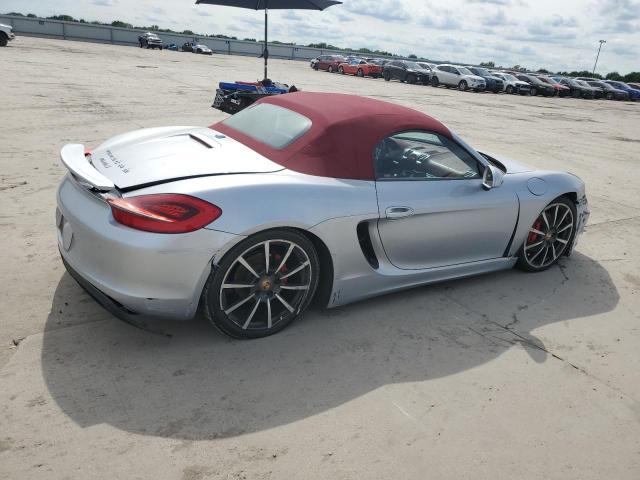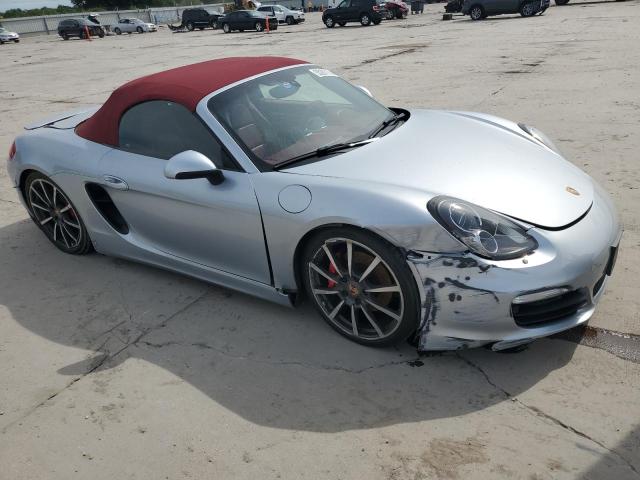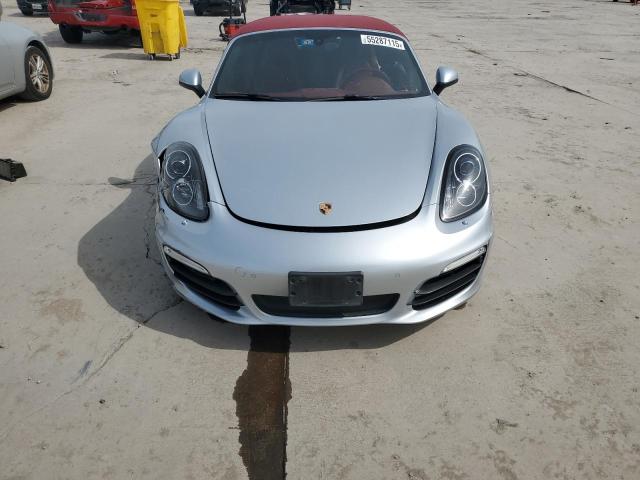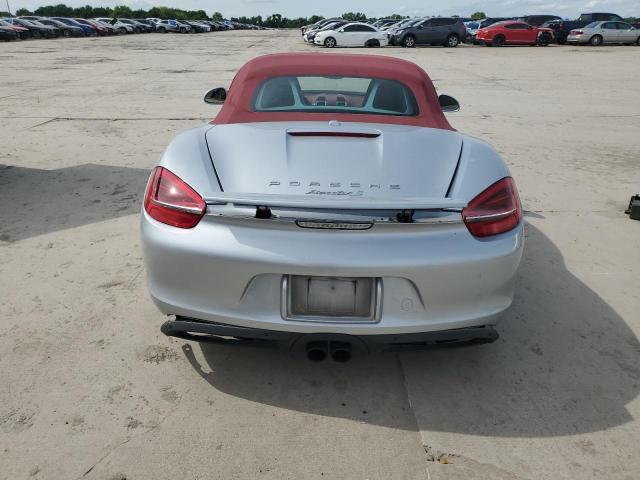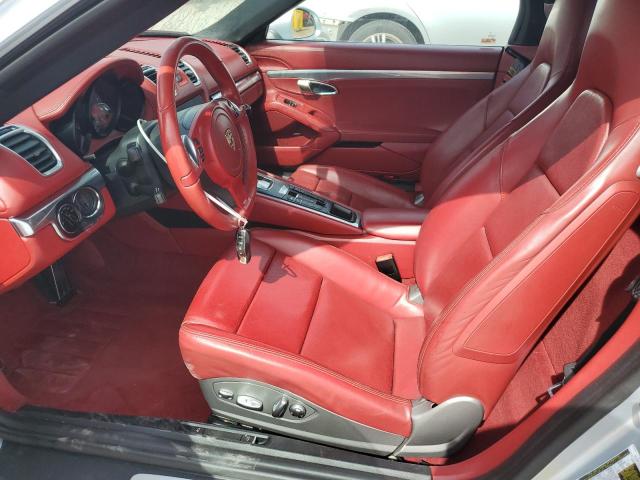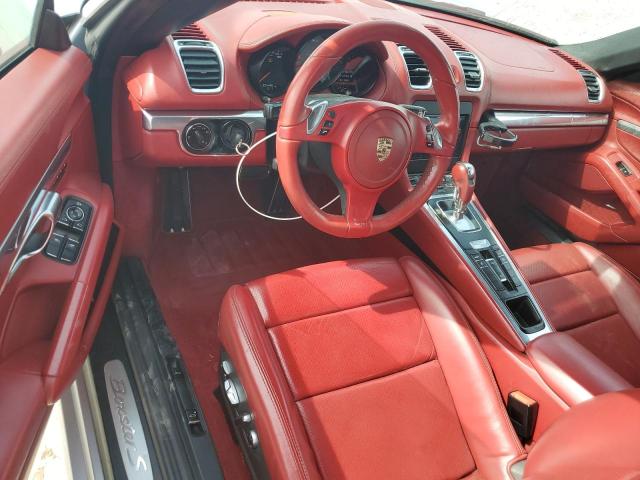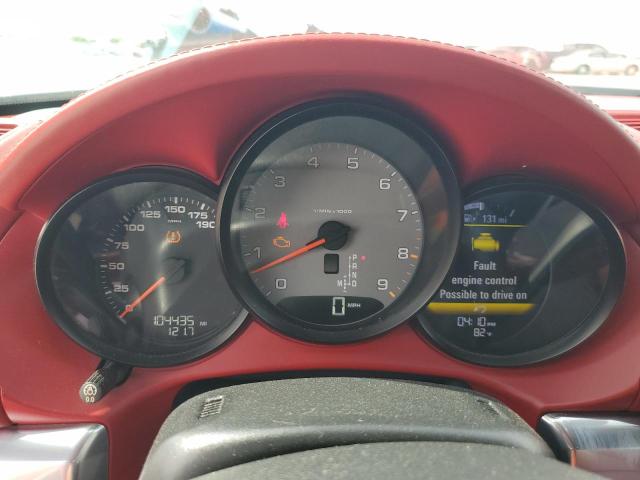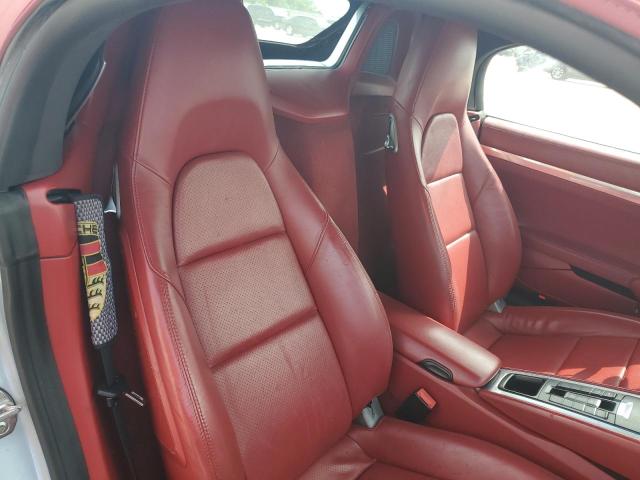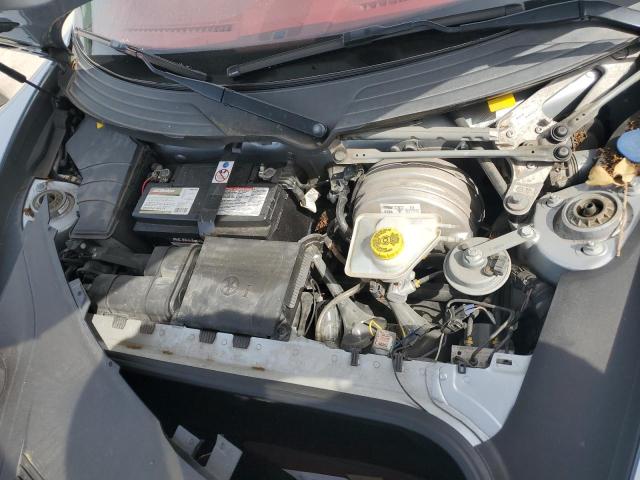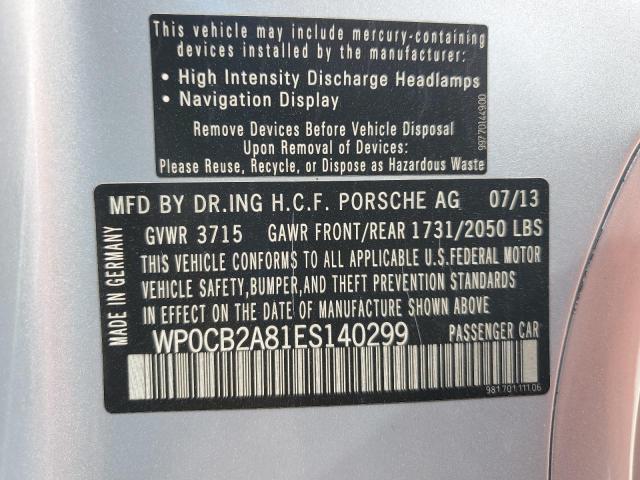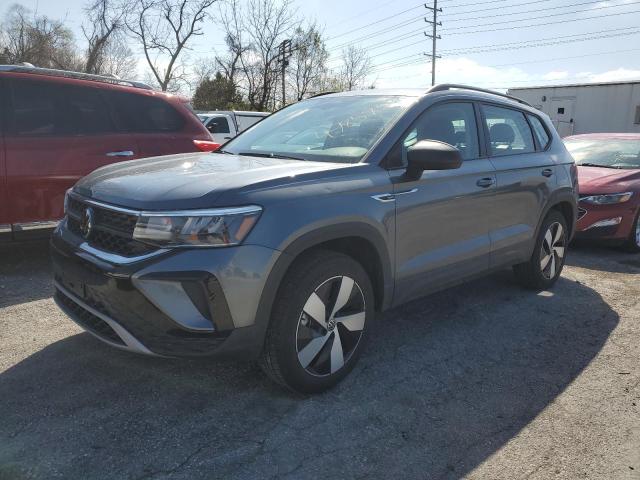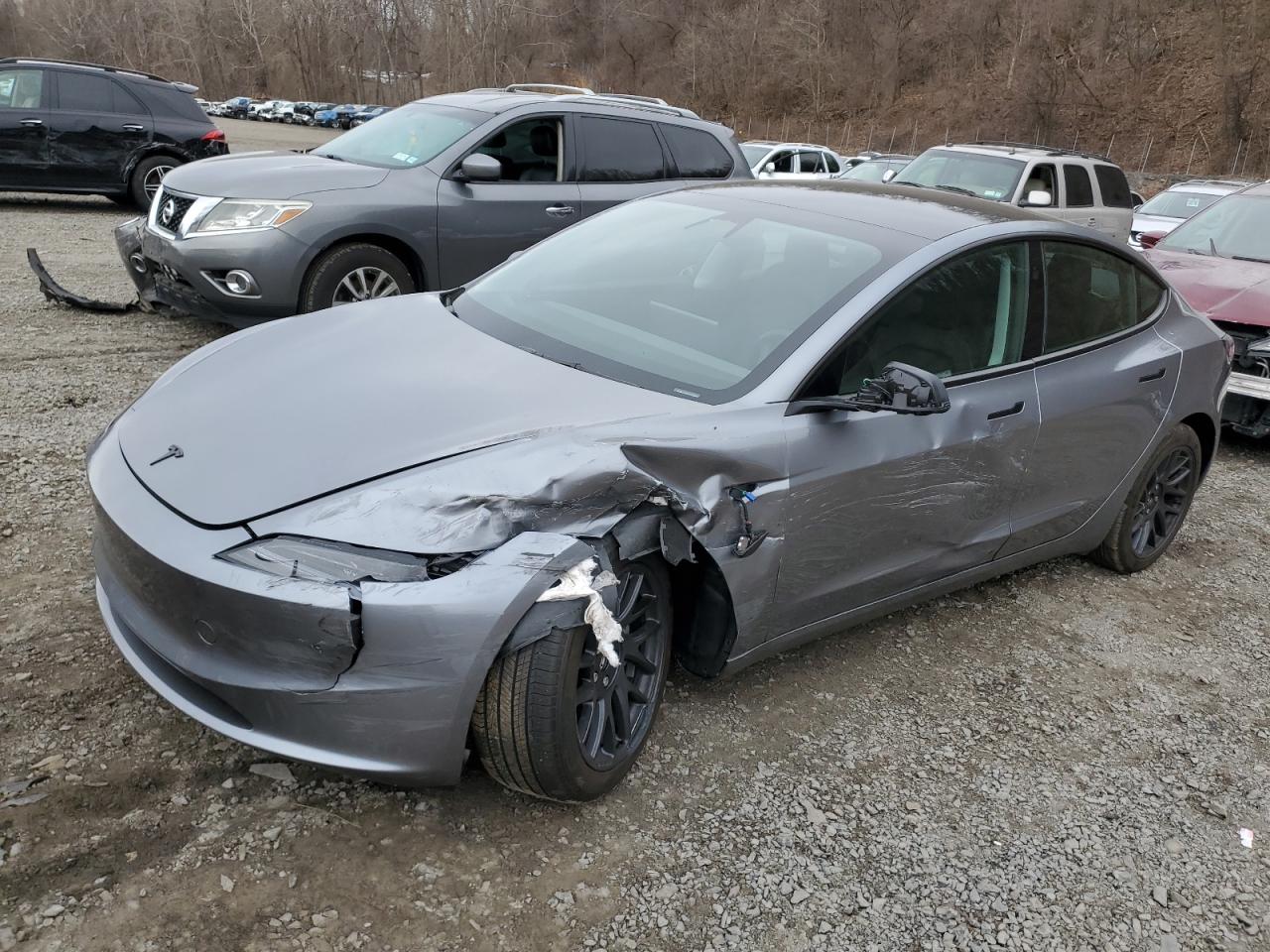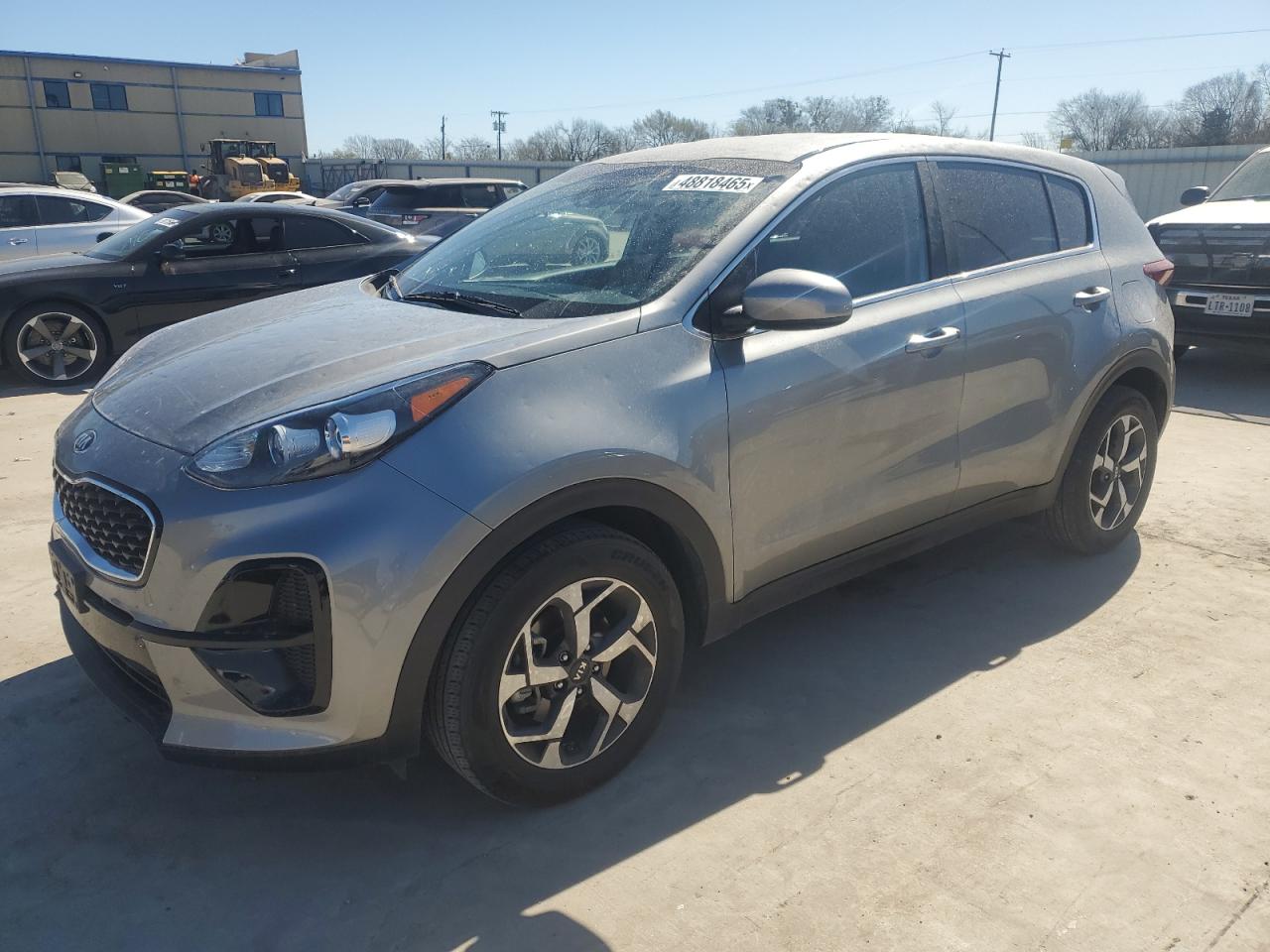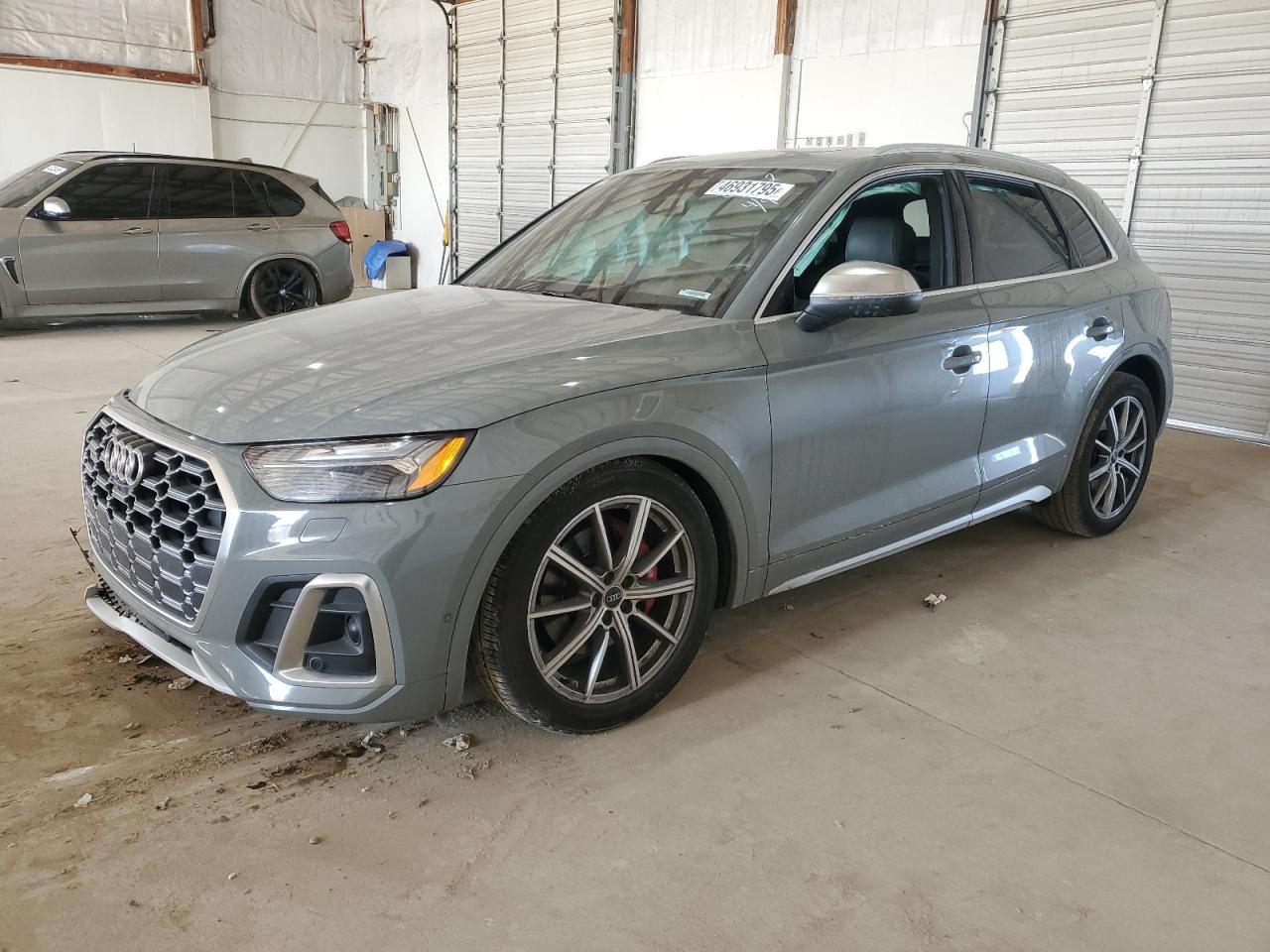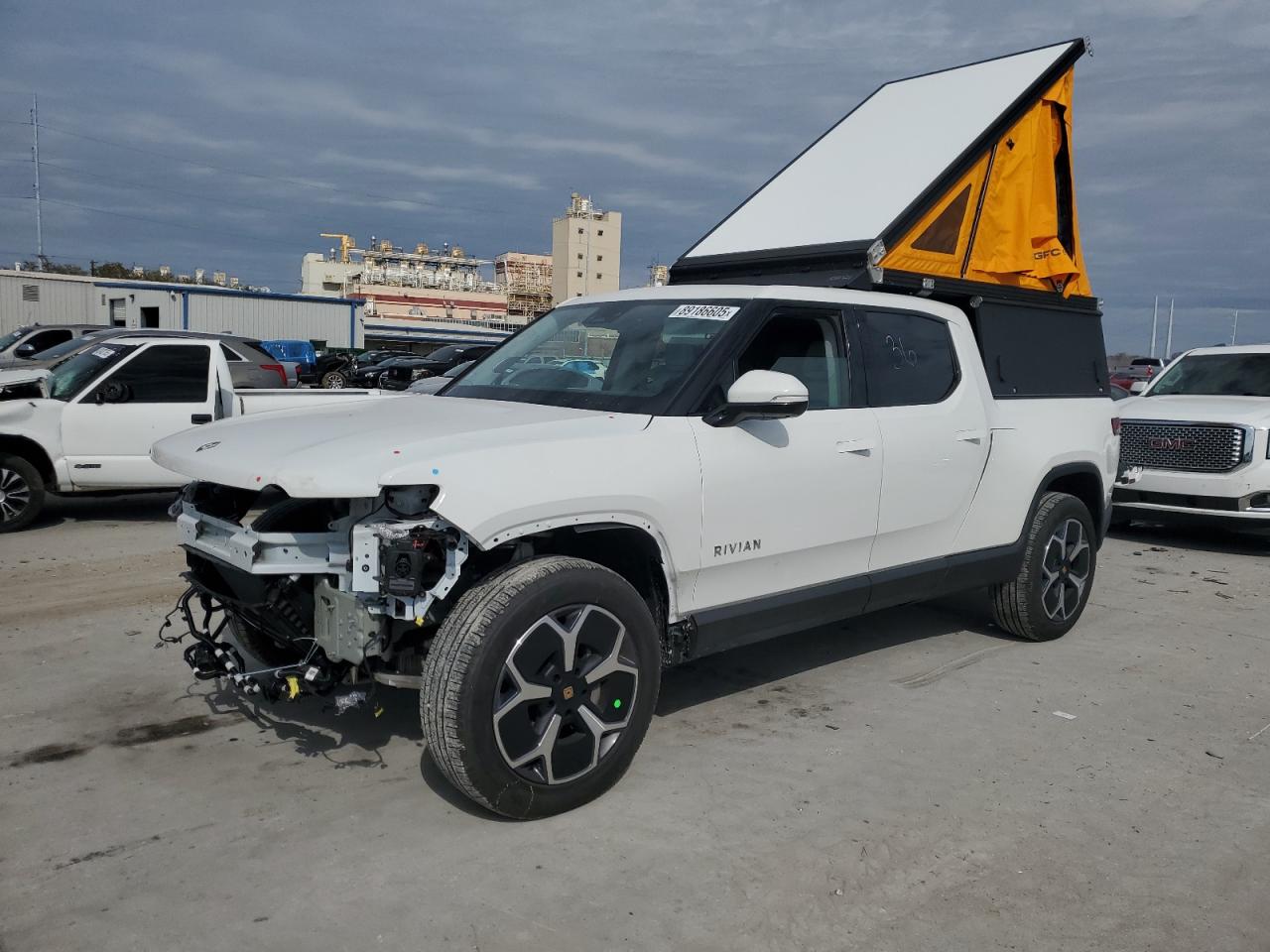2014 PORSCHE BOXSTER | WP0CB2A81ES140299
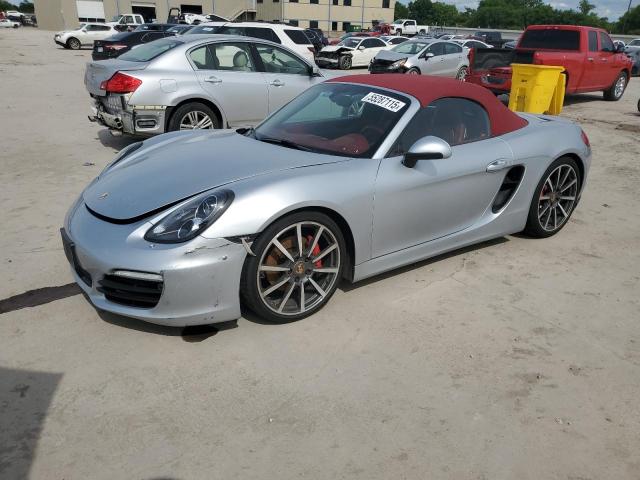 ❯
❯Lot Details
Final Bid Porsche Boxster (2014)
$11,100
$12,000
$12,900
Vehicle specifications
3
~$74,000
Engine: 3.4L Naturally Aspirated Flat-6
Torque: 370 Nm
0–100 km/h: ~4.7 s
The 981 Boxster GTS marked the apex of Porsche's naturally aspirated, mid-engine roadster formula before the turbocharged era of the 718. With its 3.4-liter flat-six pushed to 330 horsepower, it offered more than just a modest power bump over the S — it refined every component around the driver experience. Acceleration is brisk and responsive, especially with the PDK transmission and Sport Plus mode, which drops 0–100 km/h to just 4.7 seconds. But the GTS isn’t about straight-line numbers — it’s about connection. The naturally aspirated engine screams to 7,800 rpm with linearity and precision that only high-revving flat-sixes can deliver.
Chassis tuning was enhanced over the standard S model, with PASM adaptive suspension and the Sport Chrono package included as standard, giving the driver a suite of tools to tailor the car’s responses to road or track. Steering remains hydraulic — a rarity by 2015 — and delivers pure, uninterrupted feedback. The weight distribution, low center of gravity, and mid-engine layout allow the GTS to rotate with immediacy and confidence, offering throttle-adjustable balance in every corner. Optional ceramic brakes and active drivetrain mounts further elevate its on-limit composure.
What truly defines the GTS is its purity. It embodies the essence of Porsche’s lightweight roadster legacy while delivering everyday usability. It sounds better, corners harder, and responds sharper than its siblings, without losing civility or comfort. It’s the Boxster for the driver who values feel over flash, naturally aspirated emotion over forced induction, and directness over digital filters. In many ways, the 981 GTS is the last analog Porsche roadster — a future classic that rewards every input with mechanical honesty and joy.
Body Styles
The Porsche Boxster 981 was offered exclusively as a 2-door roadster with a fully automatic soft top, which could be operated in 9 seconds at speeds up to 50 km/h. The 981 generation introduced sharper proportions, longer wheelbase, shorter overhangs, and more aggressive styling cues, influenced by the 918 Spyder and Panamera.
A completely new lightweight architecture reduced weight while increasing torsional rigidity by 40%. Revised suspension geometry and electric power steering delivered more accessible dynamics. Wider tracks, larger wheels, and improved aero (including a retractable rear spoiler) gave it a planted, purposeful stance. The Boxster S and GTS featured larger front intakes, twin center exhausts, and sportier lower trim.
Model Name Meaning (Manufacturer)
The name “Boxster” is a portmanteau of “Boxer” (referring to the flat-six engine layout) and “Roadster” (denoting its open-top configuration). Introduced in 1996, the Boxster became Porsche’s volume lifeline post-959 era and laid the groundwork for the Cayman coupe. The 981 generation continued this legacy by offering purist performance with mid-engine balance at a more accessible price than the 911.
The “S” trim traditionally denotes a Sport upgrade with more displacement and power, while “GTS” (Gran Turismo Sport) indicates a sharper, more driver-focused model with performance and cosmetic enhancements — positioned just below the GT4.
Model Name Meaning (Languages)
“Boxster” is used worldwide without translation, and its meaning is intuitive in both English-speaking and European markets. The “S” and “GTS” suffixes follow motorsport and grand touring traditions — instantly recognizable across regions for denoting stepped-up performance. The name carries a reputation for driver purity and balance, especially in enthusiast circles.
Body & Interior Colors and Rims
The 2012–2015 Porsche Boxster (981 generation) marked a major evolution for the mid-engine roadster, introducing sharper styling, a lighter chassis, and a more luxurious interior — all of which were underscored by a wide variety of vibrant exterior colors, highly customizable interior themes, and performance-oriented wheel designs. This generation embraced Porsche’s growing focus on personalization and visual refinement while retaining the model’s driver-focused identity.
The body color palette was both expressive and performance-focused, offering a mix of classic Porsche hues and bold, high-impact finishes. Standard options included Black, White, and Guards Red, each paying homage to Porsche’s motorsport legacy. Metallics like Rhodium Silver, Basalt Black, Dark Blue, and Platinum Silver gave the car a more refined, understated look, particularly when paired with the optional color-matched roll bars and door mirrors. More adventurous tones such as Sapphire Blue Metallic, Carmine Red, and Racing Yellow became popular among enthusiasts looking to emphasize the car’s athleticism. Porsche also offered custom and special-order "Paint to Sample" options as part of its Exclusive program, enabling truly bespoke finishes for discerning buyers.
Inside, the Boxster 981 offered a premium cockpit that dramatically improved over its predecessor, both in layout and in material quality. Interior color options included standard Black, Luxor Beige, and Yachting Blue, with full leather upgrades available in Agate Grey, Platinum Grey, or Cognac. Two-tone interiors and contrasting seat piping or stitching were available through Porsche Exclusive, with combinations like Black/Carrera Red, Espresso/Cognac, or Pebble Grey/Agate Grey reflecting a more tailored approach to personalization. Trim inlays could be finished in aluminum, brushed or high-gloss carbon fiber, mahogany, or piano black, depending on preference and package. Sport Chrono-equipped models added a centrally mounted stopwatch on the dash and accent contrast stitching in yellow or red, reinforcing the car’s track-ready spirit.
The wheel offerings reflected the Boxster’s balance of lightweight engineering and sporty elegance. Standard models came with 18-inch alloy wheels in 5-spoke or 10-spoke designs, while S models received 19-inch wheels in more aggressive split-spoke patterns. Optional upgrades included 20-inch Carrera S wheels, Turbo-style alloys, and lightweight forged options, with finishes ranging from classic silver to platinum satin, black gloss, or even body-color matched. Many designs also allowed for center crests in full color or monochrome, furthering personalization. Paired with performance tires, these wheels not only enhanced appearance but contributed to the 981’s precise handling and feedback.
Top Expensive Options
- Porsche Active Suspension Management (PASM): ~$1,800
- Sport Chrono Package: ~$2,500
- PDK Transmission: ~$3,200
- Porsche Torque Vectoring (with LSD): ~$1,300
- 20” Carrera S Wheels: ~$2,300
- Sport Exhaust System: ~$2,500
- Full Leather Package (dash, doors): ~$3,000+
- Adaptive Sport Seats Plus: ~$2,200
- Bi-Xenon Headlights w/ PDLS: ~$1,200
- Premium Package Plus (heated/ventilated seats, auto climate): ~$2,100
vs Competitors
The 981 Boxster rivaled the BMW Z4, Audi TT RS Roadster, and Mercedes-Benz SLK55 AMG. While the TT RS and SLK delivered more brute power (especially with forced induction), the Boxster’s perfect 50:50 balance, NA throttle response, and sublime steering feel made it the most driver-focused convertible in its class.
The GTS took that formula further, with a sharper chassis, louder intake/exhaust, and more aggressive tuning — offering 911-like dynamics in a mid-engine package. Against the BMW Z4 sDrive35is, the Porsche felt lighter, better sorted, and more communicative — especially on back roads.
Fun Fact
The Boxster 981 is widely regarded as the last true analog Porsche roadster — combining a naturally aspirated flat-six with a manual gearbox, mid-engine layout, and hydraulic-like steering feel. It was also the final Boxster generation without turbocharging or four-cylinder engines. Porsche purists often cite the GTS (2014–2015) as the sweet spot: everyday usable, yet visceral enough to thrill — and now considered a modern classic.
Vehicle specifications
3
~$74,000
Torque:
0–100 km/h:
The 981 Boxster GTS marked the apex of Porsche's naturally aspirated, mid-engine roadster formula before the turbocharged era of the 718. With its 3.4-liter flat-six pushed to 330 horsepower, it offered more than just a modest power bump over the S — it refined every component around the driver experience. Acceleration is brisk and responsive, especially with the PDK transmission and Sport Plus mode, which drops 0–100 km/h to just 4.7 seconds. But the GTS isn’t about straight-line numbers — it’s about connection. The naturally aspirated engine screams to 7,800 rpm with linearity and precision that only high-revving flat-sixes can deliver.
Chassis tuning was enhanced over the standard S model, with PASM adaptive suspension and the Sport Chrono package included as standard, giving the driver a suite of tools to tailor the car’s responses to road or track. Steering remains hydraulic — a rarity by 2015 — and delivers pure, uninterrupted feedback. The weight distribution, low center of gravity, and mid-engine layout allow the GTS to rotate with immediacy and confidence, offering throttle-adjustable balance in every corner. Optional ceramic brakes and active drivetrain mounts further elevate its on-limit composure.
What truly defines the GTS is its purity. It embodies the essence of Porsche’s lightweight roadster legacy while delivering everyday usability. It sounds better, corners harder, and responds sharper than its siblings, without losing civility or comfort. It’s the Boxster for the driver who values feel over flash, naturally aspirated emotion over forced induction, and directness over digital filters. In many ways, the 981 GTS is the last analog Porsche roadster — a future classic that rewards every input with mechanical honesty and joy.
Body Styles
The Porsche Boxster 981 was offered exclusively as a 2-door roadster with a fully automatic soft top, which could be operated in 9 seconds at speeds up to 50 km/h. The 981 generation introduced sharper proportions, longer wheelbase, shorter overhangs, and more aggressive styling cues, influenced by the 918 Spyder and Panamera.
A completely new lightweight architecture reduced weight while increasing torsional rigidity by 40%. Revised suspension geometry and electric power steering delivered more accessible dynamics. Wider tracks, larger wheels, and improved aero (including a retractable rear spoiler) gave it a planted, purposeful stance. The Boxster S and GTS featured larger front intakes, twin center exhausts, and sportier lower trim.
Model Name Meaning (Manufacturer)
The name “Boxster” is a portmanteau of “Boxer” (referring to the flat-six engine layout) and “Roadster” (denoting its open-top configuration). Introduced in 1996, the Boxster became Porsche’s volume lifeline post-959 era and laid the groundwork for the Cayman coupe. The 981 generation continued this legacy by offering purist performance with mid-engine balance at a more accessible price than the 911.
The “S” trim traditionally denotes a Sport upgrade with more displacement and power, while “GTS” (Gran Turismo Sport) indicates a sharper, more driver-focused model with performance and cosmetic enhancements — positioned just below the GT4.
Model Name Meaning (Languages)
“Boxster” is used worldwide without translation, and its meaning is intuitive in both English-speaking and European markets. The “S” and “GTS” suffixes follow motorsport and grand touring traditions — instantly recognizable across regions for denoting stepped-up performance. The name carries a reputation for driver purity and balance, especially in enthusiast circles.
Body & Interior Colors and Rims
The 2012–2015 Porsche Boxster (981 generation) marked a major evolution for the mid-engine roadster, introducing sharper styling, a lighter chassis, and a more luxurious interior — all of which were underscored by a wide variety of vibrant exterior colors, highly customizable interior themes, and performance-oriented wheel designs. This generation embraced Porsche’s growing focus on personalization and visual refinement while retaining the model’s driver-focused identity.
The body color palette was both expressive and performance-focused, offering a mix of classic Porsche hues and bold, high-impact finishes. Standard options included Black, White, and Guards Red, each paying homage to Porsche’s motorsport legacy. Metallics like Rhodium Silver, Basalt Black, Dark Blue, and Platinum Silver gave the car a more refined, understated look, particularly when paired with the optional color-matched roll bars and door mirrors. More adventurous tones such as Sapphire Blue Metallic, Carmine Red, and Racing Yellow became popular among enthusiasts looking to emphasize the car’s athleticism. Porsche also offered custom and special-order "Paint to Sample" options as part of its Exclusive program, enabling truly bespoke finishes for discerning buyers.
Inside, the Boxster 981 offered a premium cockpit that dramatically improved over its predecessor, both in layout and in material quality. Interior color options included standard Black, Luxor Beige, and Yachting Blue, with full leather upgrades available in Agate Grey, Platinum Grey, or Cognac. Two-tone interiors and contrasting seat piping or stitching were available through Porsche Exclusive, with combinations like Black/Carrera Red, Espresso/Cognac, or Pebble Grey/Agate Grey reflecting a more tailored approach to personalization. Trim inlays could be finished in aluminum, brushed or high-gloss carbon fiber, mahogany, or piano black, depending on preference and package. Sport Chrono-equipped models added a centrally mounted stopwatch on the dash and accent contrast stitching in yellow or red, reinforcing the car’s track-ready spirit.
The wheel offerings reflected the Boxster’s balance of lightweight engineering and sporty elegance. Standard models came with 18-inch alloy wheels in 5-spoke or 10-spoke designs, while S models received 19-inch wheels in more aggressive split-spoke patterns. Optional upgrades included 20-inch Carrera S wheels, Turbo-style alloys, and lightweight forged options, with finishes ranging from classic silver to platinum satin, black gloss, or even body-color matched. Many designs also allowed for center crests in full color or monochrome, furthering personalization. Paired with performance tires, these wheels not only enhanced appearance but contributed to the 981’s precise handling and feedback.
Top Expensive Options
- Porsche Active Suspension Management (PASM): ~$1,800
- Sport Chrono Package: ~$2,500
- PDK Transmission: ~$3,200
- Porsche Torque Vectoring (with LSD): ~$1,300
- 20” Carrera S Wheels: ~$2,300
- Sport Exhaust System: ~$2,500
- Full Leather Package (dash, doors): ~$3,000+
- Adaptive Sport Seats Plus: ~$2,200
- Bi-Xenon Headlights w/ PDLS: ~$1,200
- Premium Package Plus (heated/ventilated seats, auto climate): ~$2,100
vs Competitors
The 981 Boxster rivaled the BMW Z4, Audi TT RS Roadster, and Mercedes-Benz SLK55 AMG. While the TT RS and SLK delivered more brute power (especially with forced induction), the Boxster’s perfect 50:50 balance, NA throttle response, and sublime steering feel made it the most driver-focused convertible in its class.
The GTS took that formula further, with a sharper chassis, louder intake/exhaust, and more aggressive tuning — offering 911-like dynamics in a mid-engine package. Against the BMW Z4 sDrive35is, the Porsche felt lighter, better sorted, and more communicative — especially on back roads.
Fun Fact
The Boxster 981 is widely regarded as the last true analog Porsche roadster — combining a naturally aspirated flat-six with a manual gearbox, mid-engine layout, and hydraulic-like steering feel. It was also the final Boxster generation without turbocharging or four-cylinder engines. Porsche purists often cite the GTS (2014–2015) as the sweet spot: everyday usable, yet visceral enough to thrill — and now considered a modern classic.


